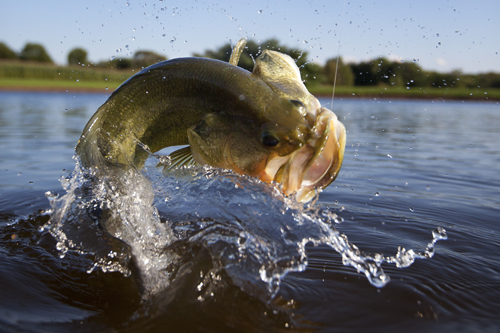
You have the rod and reel packed. The morning sun is shining across the water. Bait is in the bucket, drinks are in the cooler and the boat is officially in the water. Your cell phone is set to “do not disturb,” and it is Time. To. Fish.
You’re only missing one thing: the perfect fishing spot.
Once you get on the river or lake, finding the perfect fishing spot by yourself isn’t easy. It might take years of experience, both in fishing and getting the lay of the land (or the water.)
Here are some tips on finding that perfect spot to drop your line.
The Easy Way: Ask around
A little research can go a long way. If you have time beforehand, check out the local bait shops and ask around. The smaller and older the bait shop, the better! These are great resources for local expertise, whether you get it from the employees or the fellow patrons.
Getting to know your fellow anglers is always a great plan, too. They may help you out more than you know.
If that’s not an option, you can always look around online. Most lakes of moderate size have a forum, website or other online resource where you can talk to other fishing enthusiasts. Anglers are often very leery of giving away their secrets, so be polite and respectful.
And remember they are prone to tell “big fish” stories, so don’t get offended if someone brags about a great catch and refuses to say where!
Do it yourself
Even if you don’t have a native guide, you can probably find a few areas on the lake that are prime targets for a fishing spot. Make sure you know what kind of fish are in your lake, too. Bass, perch, trout and other fish all gravitate toward different areas, depths and temperatures.
Vegetation: Like all of us, fish need to eat! Water-dwelling weeds, plants and other plants are often teeming with smaller fish and insects that big fish feed on. The edge of weeds are typically a buffet for fish.
Overhangs: Take a careful look at fallen trees, overhangs and other shady areas. Algae often attracts food for our finny friends. Predatory fish also like to hide under overhangs and fallen trees to wait for prey to pass by.
Drop-offs: Fish are drawn to the edges of different parts of the lake. Areas where shallow water drops off into deep water are great spots to cast for deep water fish. They often come to the edges here to hunt, before returning to deeper waters.
If you want a simple depth gauge, just drop anchor and see how far it goes until it stops!
Fishing sonar
When fishing sonar for recreational fishing was introduced more than 10 years ago, it was a game changer. Today, a dozen brands of technology offer ways to look down into the water and find your next catch.
Here’s how fishing sonar works:
A device called a “transducer,” mounted in or through the hull, emits sound waves down into the water. These sound waves travel in a cone– think of a flashlight beam – from the hull to the lake (or ocean) floor, picking up any objects in their path. This includes the terrain, sunken boats, trees – and fish!
These objects are then displayed onscreen on a device in the boat, in varying degrees of resolution. Most come out as blobs or grainy shapes. It takes some skill to interpret these. But you would be amazed to see just how much aquatic life is right below your boat!
Expert mode: Trial and Error
When all else fails, there’s good, old-fashioned trial and error. Fish the lake! Getting to know every inlet and stretch of your lake can make for years of fun. If you want to track your success, try to find a topographical map of your lake. Mark any big catches, and see where the “hot spots” are.
Remember, a bad day of fishing is always better than a good day at work!
Before long, you just might realize that you’re the seasoned angler, and find yourself looking across the bait shop at someone asking for a few tips on the perfect fishing spot to cast their line!

